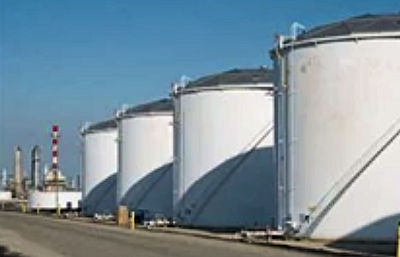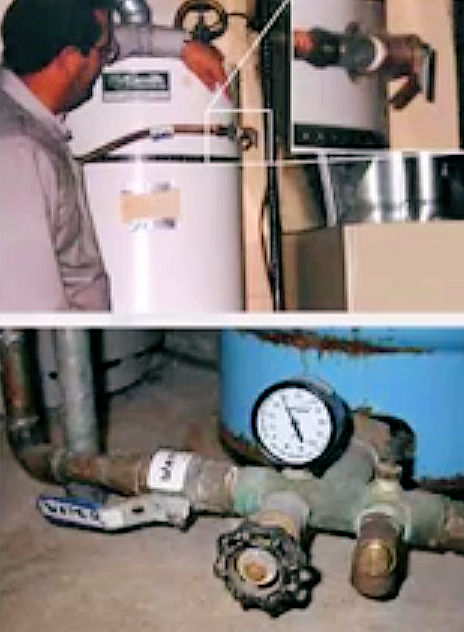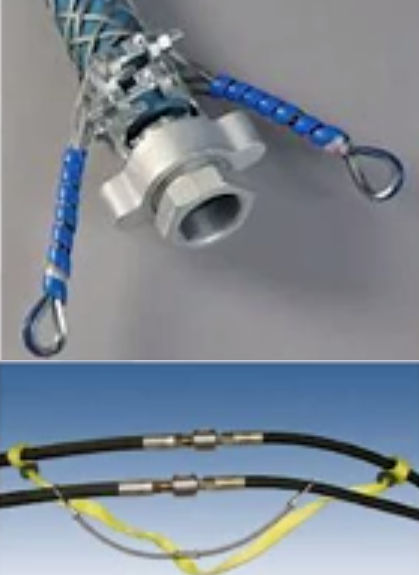20.A.04 Testing using Pressurized Gases/Air.
- Tests for structural integrity or leaks using pressurized gases, such as air, are prohibited, except for:
- (1) Testing of bulk petroleum, oil, and lubricant (POL) storage tanks under API standards, or
- (2) Testing when permitted by all applicable manufacturers' specifications or when specified by an applicable code.
- Testing with pressurized air or gases must be conducted within the limits of the specific codes or standards specified by the manufacturer's recommendations using detailed test procedures that have been prepared by a Competent Person (CP), submitted to and accepted by the GDA. A CP must be responsible for supervision of the testing procedures and all workers performing the testing must be knowledgeable of the procedures, hazards and controls. Quality assurance/control measures must assure strict enforcement of all requirements.
- If interim or final acceptance testing is anticipated to occur 2 or more months after the initial pipe or system installation preparatory meeting, a supplemental preparatory meeting must be held immediately prior to the testing to review the test procedures and AHA.
20.A.05 Any pressurized equipment or system found to be in an unsafe operating condition must be tagged "UNSAFE PRESSURIZED SYSTEM - DO NOT USE" at the controls and its use must be prohibited until the unsafe conditions have been corrected.
20.A.06 Pressurized equipment and systems must be operated and maintained only by qualified, designated personnel.
20.A.07 The normal operating pressure of pressurized equipment and systems must not exceed the design pressure.
20.A.08 No safety appliance or device must be removed or made ineffective, except for making immediate repairs or adjustments, and then only after the pressure has been relieved and the power shut off using proper lockout/tagout procedures. > See Section 12.
20.A.09 Repairs or adjustments to equipment or systems under pressure require a written safe clearance procedure.
20.A.10 The discharge from safety valves, relief valves, and blowoffs must be located so that it is not a hazard to personnel.
20.A.11 Master valves and controls must be either located or equipped to permit operation from the floor level or they must be provided with safe access.
20.A.12 A pressure gauge must be provided on all pressurized equipment and systems and must be in good operational condition.
20.A.13 Safety and relief valves must be provided on all pressurized equipment and systems.
- A safety relief valve setting not more than 10% over working pressure is recommended. In no case must the safety relief valve setting be higher than the maximum allowable pressure of the receiver or the system.
- No valve must be placed between the pressure vessel or generating equipment and a safety or relief valve or between the safety or relief valve and the atmosphere.
- Adjustments and settings of safety relief valves must be made by a qualified mechanic with equipment designed for valve adjustment. Valves must be sealed after adjustment.
- In the event that the pressure registers above the maximum allowable working pressure on the gauge without the safety or relief valve operating, the pressure gauge must be checked immediately. If such check indicates that the safety or relief valve is inoperative, the equipment must be removed from service until the safety or relief valve has been adjusted or replaced.
20.A.14 Piping must meet requirements of the ASME B31.
20.A.15 Pressurized manual equipment, subject to whipping or rotation if released, must be provided with an automatic shut-off or control of the dead-man type.
20.A.16 Except where automatic shutoff valves are used, safety lashings or suitable double action locking devices must be used at connections to machines of high pressure hose lines and between high pressure hose lines.
20.A.17 Connections with high pressure hoses must be secured with a safety lashing/whip check:
- Safety lashings must consist of two metal hose clamps connected by a flexible lacing: the metal hose clamps must be attached to the hose ends separate from the quick makeup connection;
- The flexible lacing must be suitably strong cables, chains, or wires. Wires or pins through the quick makeup connection are not acceptable for use as safety lashings.
20.A.18 All pressurized cylinders, actuating booms, outriggers, or other load supporting appliances must be equipped with pilot check valves, holding valves, or positive mechanical locks to prevent movement in case of failure in the pressure system. Replacement of pressure system fittings must be with new parts equivalent to the manufacturer's standards.
Knowledge Check Choose the best answer for the question.
20-2. Except for immediate repairs or adjustments on pressurized equipment, what procedures must be used when removing safety devices or making them ineffective?
You forgot to answer the question!



